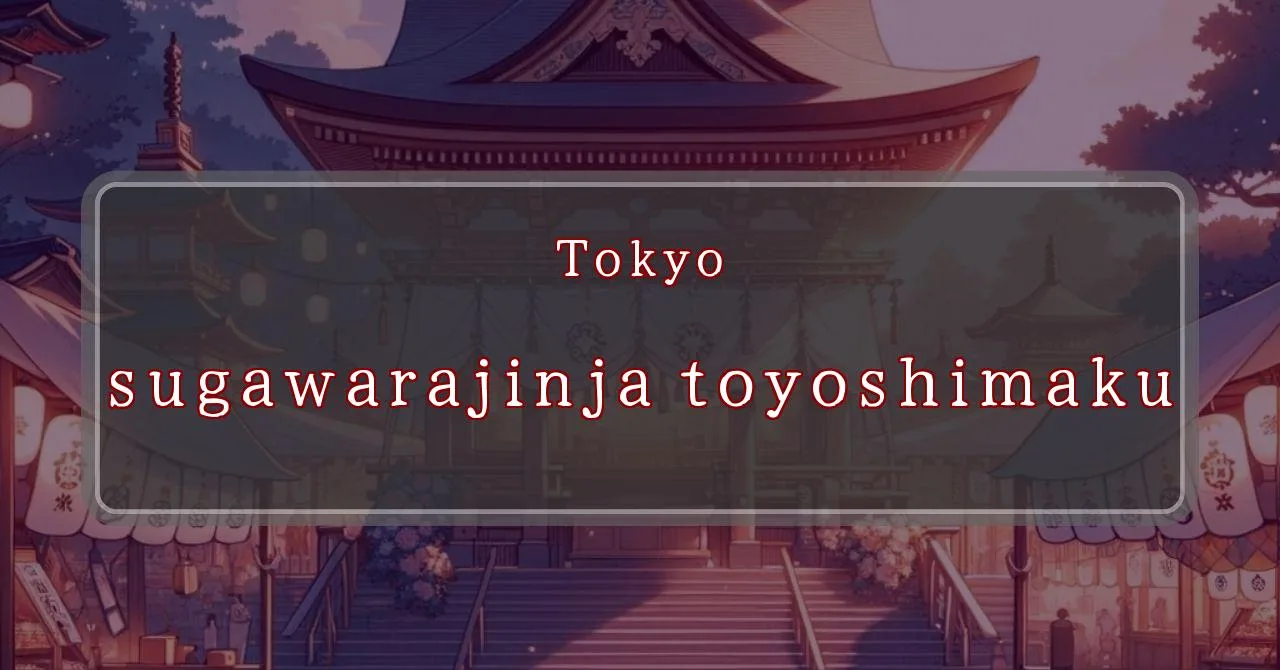Enchanting melodies and divine processions: A glimpse into Sugawara Shrine’s grand festival
Basic Information
Sugawara Shrine, located in the Kitaotsuka district of Toshima Ward, Tokyo, is a Shinto shrine dedicated to the revered scholar and deity of learning, Sugawara no Michizane. Enshrined alongside Sugawara no Michizane is the deity Ukanomitama no Mikoto, the god of food and agriculture.
- Address: 1-7-3 Kitaotsuka, Toshima-ku, Tokyo 170-0004
- Phone Number: 03-3918-0452
- Access: A short walk from Otsuka Station on the JR Yamanote Line or巣鴨 Station on the Toden Arakawa Line.
- Festival Days: May 25th, 2024 (Reiwa 6)
Main Events and Attractions of the Festival
The Sugawara Shrine Festival, held annually on May 25th, is a vibrant and lively celebration that attracts many visitors to Toshima Ward. The festival features a variety of traditional events and attractions, including:
Mikoshi Procession
One of the main highlights of the festival is the mikoshi procession, where a portable shrine is carried through the streets of Kitaotsuka by groups of people. The mikoshi is believed to house the spirit of Sugawara no Michizane, and carrying it is seen as a great honor. The procession is accompanied by traditional music and lively dancing, creating a festive atmosphere.
Shishimai Dance
Another popular attraction at the festival is the shishimai dance, a traditional lion dance performed by skilled dancers wearing colorful lion costumes. The shishimai dance is believed to bring good luck and ward off evil spirits, and it is a delight to watch for people of all ages.
Mochi-maki
During the festival, there is also a mochi-maki ceremony, where rice cakes (mochi) are thrown into the crowd by shrine officials. Participants eagerly try to catch the mochi, as it is believed to bring good luck and prosperity. The mochi-maki is a fun and exciting event that is enjoyed by both children and adults.
Food Stalls and Games
The festival also features a variety of food stalls selling traditional Japanese festival foods such as yakitori, takoyaki, and cotton candy. There are also games and activities for children, such as goldfish scooping and ring toss. The festival is a great opportunity to experience the lively atmosphere of a traditional Japanese festival.
Blessings and Deities
Sugawara Shrine is dedicated to Sugawara no Michizane, a revered scholar and deity of learning. He is believed to bestow blessings of academic success, wisdom, and good fortune to those who pray to him. Sugawara no Michizane is also known as Tenjin, and he is often depicted riding a white ox.
- Deity: Sugawara no Michizane (Tenjin)
- Blessings: Academic success, wisdom, good fortune
Origin and History
The origins of Sugawara Shrine are unclear, but it is believed to have been founded during the Muromachi period (1336-1573). The shrine was originally located in the Yushima district of Tokyo, but it was moved to its current location in Kitaotsuka in 1665.
- Founded: Muromachi period (1336-1573)
- Original location: Yushima district, Tokyo
- Current location: Kitaotsuka, Toshima-ku, Tokyo
Tips and Notes for Visitors
Here are some tips and notes for visitors to Sugawara Shrine:
- Hours: The shrine is open daily from 9:00 AM to 5:00 PM.
- Admission: Admission to the shrine is free.
- Dress code: Visitors are expected to dress respectfully when visiting the shrine.
- Photography: Photography is permitted within the shrine grounds, but please be respectful of other visitors.
- Festival: The Sugawara Shrine Festival is held annually on May 25th. The festival features a variety of events and attractions, including a mikoshi procession, shishimai dance, and mochi-maki ceremony.
Parking Information
There is no parking lot at Sugawara Shrine. Visitors are advised to use public transportation or park in a nearby parking lot.
- Public transportation: The shrine is a short walk from Otsuka Station on the JR Yamanote Line or巣鴨 Station on the Toden Arakawa Line.
- Parking lots: There are several parking lots located within a short walking distance of the shrine.
Popular Stalls and Food Carts in Recent Years
| Type of Stall | Description |
|---|---|
| Takoyaki | A staple at Japanese festivals. Characterized by a crispy outside and a creamy inside. |
| Jaga Butter | A simple yet popular snack of hot potatoes lavishly topped with melted butter. |
| Baby Castella | Small castella cakes, sweet and fluffy treats enjoyed by children and adults alike. |
| Grilled Ayu with Salt | Fresh ayu fish grilled whole with salt, a savory taste of Japanese summer. |
| Shaapin | A unique gourmet item influenced by foreign cuisine, with a chewy skin wrapping the filling. |
| Okonomiyaki | A Japanese grilled dish where you often choose your own ingredients for a personalized flavor. |
| Cotton Candy | A fluffy, sweet snack that’s extremely popular with children. |
| Chocolate Banana | A banana coated in chocolate, a fun and visually appealing dessert. |
| Kushiyaki | Various types of ingredients skewered and grilled, an easy-to-enjoy snack. |
| Yakisoba | Fried noodles mixed with a special sauce, a fast food favorite in Japan. |



